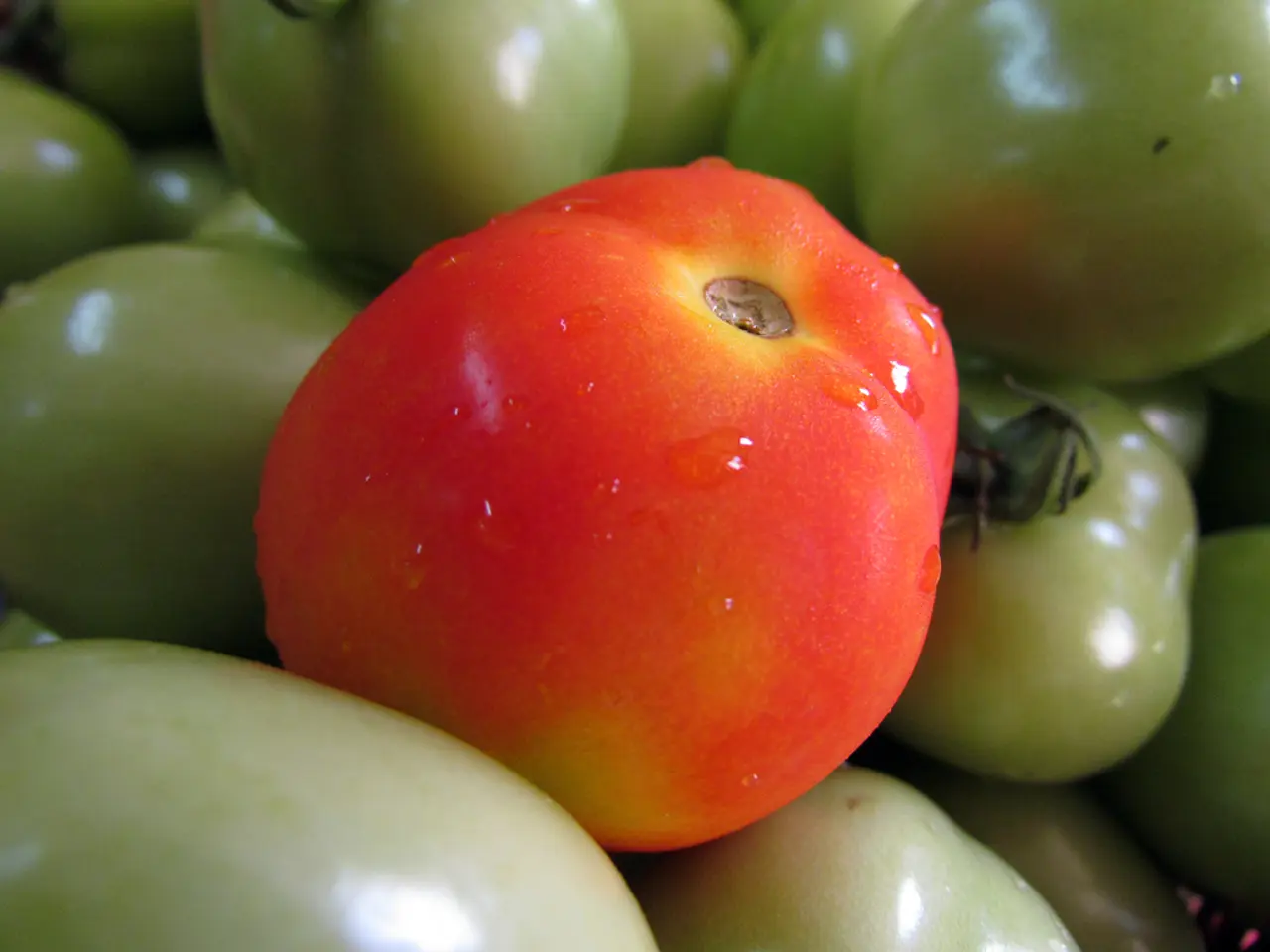Gardeners Confronting Discolored Tomato Leaves: Understanding the Root Causes and Providing Remedies
In the vibrant world of gardening, few things can be more disheartening than noticing browning leaves on tomato plants. This article aims to shed light on the common causes, preventative measures, and solutions for this issue.
Tomato plants, like any other plants, require a balanced environment to thrive. Enriching the soil with compost or organic matter provides a steady supply of nutrients, ensuring the plants' health and vigour. However, browning leaves can still occur due to various factors.
One of the common causes of browning leaves is nutrient deficiencies, particularly in nitrogen, magnesium, and calcium. Nitrogen deficiency leads to yellowing starting at the bottom leaves, which can progress to brown dead spots as the plant weakens. Magnesium deficiency often results in leaf discoloration, including browning, while calcium deficiency causes blossom end rot on fruits and can also lead to leaf browning and stress symptoms.
Fungal diseases such as early blight and leaf mold are also culprits. Early blight causes browning spots on leaves, while leaf mold appears as yellow or pale spots that turn gray and velvety on the undersides of leaves in humid conditions.
Environmental stressors, like overwatering leading to waterlogged roots, uneven watering, and compacted soil, can exacerbate these issues. Overwatering can lead to root rot, causing nutrient deprivation and brown leaves, while underwatering can make leaves dry and brittle.
Vascular diseases, such as Verticillium wilt, can also cause browning leaves.
Preventative measures include proper spacing and staking to improve airflow and keep foliage dry, reducing fungal infections. Consistent watering to avoid water stress and calcium transport issues is crucial, as is soil fertility management with nutrient-rich soil and appropriate fertilizers to prevent nutrient deficiencies. Crop rotation and hygiene help reduce fungal spores and soil-borne pathogens.
Watering deeply and using drip irrigation can help control the amount of water and avoid fungal diseases. Regularly monitoring soil pH and nutrient levels helps in adjusting fertilization practices to ensure healthy tomato plants.
Glen, a gardening expert with over 15 years of experience in garden maintenance, design, and landscaping services, emphasizes the importance of regular inspection for tiny pests like aphids, spider mites, and whiteflies, which can cause yellowing, browning, and wilting in tomato leaves. A spray made from neem oil or insecticidal soap can help control these pests.
Keeping the garden clean by regularly removing dead leaves and cleaning tools can prevent many issues in the garden. Rotating crops annually can help prevent disease build-up in the soil.
By addressing these key factors—disease control, nutrition, watering practices, and plant care—you can greatly reduce the occurrence of browning leaves on tomato plants, ensuring a bountiful tomato harvest.
To maintain a verdant lifestyle and vibrant home-and-garden, it's essential to focus on gardening essentials, such as providing a nutrient-rich soil that prevents deficiencies in nitrogen, magnesium, and calcium. Additionally, proper watering, disease control, and careful plant inspection can help avoid issues like vascular diseases, fungal infections, and pest infestations, thus reducing the occurrence of browning leaves on tomato plants.








